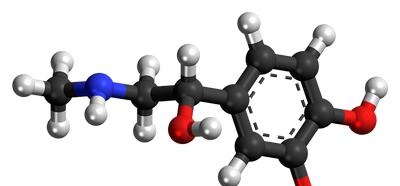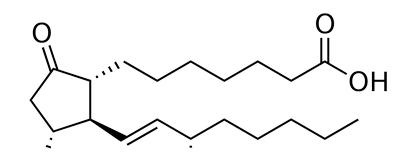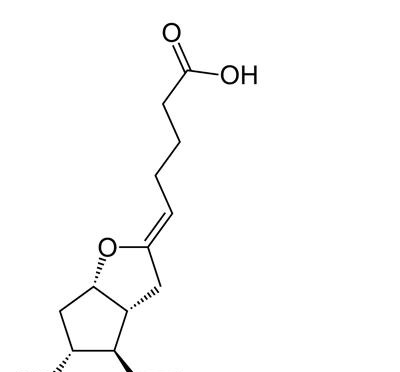|
 Fourteen unsaturated fatty acids are now the prostaglandin family. These biologically active substances attract the closest attention of specialists. They have become the subject of discussion at symposia, international conferences; an international congress was dedicated to them, which was held in Singapore in 1976. Fourteen unsaturated fatty acids are now the prostaglandin family. These biologically active substances attract the closest attention of specialists. They have become the subject of discussion at symposia, international conferences; an international congress was dedicated to them, which was held in Singapore in 1976.
Prostaglandins are ubiquitous: researchers find them in the lungs, kidneys, liver, skin, and other organs and tissues of the body. But for the first time (in the mid-30s of the twentieth century) they were found in male seminal fluid. Believing that previously unknown substances are a product of the prostate (prostate gland), the Swedish scientist Euler called them prostaglandins.
He made a mistake. Subsequently, it turned out that prostaglandins are synthesized in all cells of the body. But it was possible to establish this only in the early 60s; then the structure of these substances was deciphered and their spatial configuration was revealed. Soon, a method of artificial biosynthesis of prostaglandins was developed - the researchers were able to deploy experiments.
In our country, a targeted, in-depth study of the role of prostaglandins in the body is being conducted at the Institute of Experimental Endocrinology and Chemistry of Hormones of the Academy of Medical Sciences. And the research institute of obstetrics and gynecology has already accumulated experience of their application in obstetric practice. The director of the Research Institute of Obstetrics and Gynecology M3, Academician Leonid Semenovich Persianinov answers questions.
- Nikolay Alekseevich, in modern scientific literature there are about ten thousand publications devoted to prostaglandins. Nevertheless, these substances continue to remain largely terra incognita. What does science know about prostaglandins today? What is their function in the body?
- Elucidating the physiological role of prostaglandins is not an easy task. In the human body, these biologically active substances are contained in minimal quantities - in thousandths of a gram. They are surprisingly unstable. Having arisen in the cell, prostaglandins literally in a matter of seconds perform their important function and here, in the cell, they disintegrate. Their short life span is one of the reasons why prostaglandins have remained elusive for such a long time. In addition, prostaglandins are highly reactive: they use the slightest opportunity to enter into a chemical reaction. Moreover, in the body, the direction of one or another reaction in which prostaglandins are involved changes depending on the hormonal background. All this makes research extremely difficult. On many questions concerning the role of prostaglandins, specialists will have to answer only tomorrow.

Prostaglandin E1
Today we know that prostaglandins are unsaturated fatty acids with twenty carbon atoms. They are built according to the same scheme: a five-membered (cyclopentane) ring and two side chains. Depending on the structure of the ring, there are four main groups of prostaglandins: A, B, E and F; each group consists of a number of compounds with similar biological effects.
Prostaglandins are sometimes referred to as cell hormones. Because, unlike hormones that are produced by the endocrine glands, they are synthesized in all cells of the body. And if hormones are able to exert their effect relatively far from the gland where they were formed, then the physiological effect of prostaglandins is limited mainly by the place of their production, that is, by the cell.
The mechanism of action of prostaglandins is not fully understood.But there is every reason to assert that these biologically active substances are the most important link in the regulation of the vital activity of the cell. As it turned out, prostaglandins work in close contact with hormones. This can be schematically represented as follows.
The hormone, by binding to a receptor built into the cell membrane, activates the synthesis of certain prostaglandins. In turn, prostaglandins use the synthesis of cyclic adenosine monophosphate - a compound that activates cellular enzymes and thus changes the course of certain processes in the cell. In other words, prostaglandins trigger the cellular mechanism for executing orders delivered by the hormone "from above"; they act subtly and directionally.
Among the known prostaglandins, pairs of substances with opposite effects have been found. For example, prostaglandin F2a increases blood pressure, while E2 decreases it. This is another confirmation of the fact that biological processes occurring in the body are, as a rule, under the control of two compounds acting in different directions. As an example, I will cite the well-known insulin and the not-so-popular glucagon - two hormones that control blood glucose levels. Glucagon "makes sure" that its level does not fall below normal: by influencing the liver, it promotes the production of glucose and thus increases its content in the blood. Insulin interferes with the action of glucagon and lowers blood glucose.
- There is an opinion that the potential of prostaglandins as drugs is very high. What is it based on?
- First of all, on the role that prostaglandins play in the body. Judging by the results of studies, they participate - at the cell level - in the regulation of intimate processes of fat metabolism, blood pressure, gastric secretion; play a major role in the processes associated with the reproduction of offspring ... These and other vital processes occurring in the human body are directly dependent on the activity of prostaglandins, their concentration: normal, low or excessive.
There is an assumption that the cause of ulcers in the stomach is insufficient synthesis of prostaglandin E in its cells. It has been established that prostaglandin E inhibits gastric secretion, and if it is deficient or completely absent, gastric juice is produced in excess, which can cause peptic ulcer disease. Experiments on animals have shown that the introduction of prostaglandin E and the replenishment of its deficiency in the body promotes the healing of ulcers.
Group E prostaglandins are the strongest dilators (dilators) of small blood vessels. Due to this property, they have the ability to lower blood pressure and can be used to treat hypertension. In particular, with hypertensive crises, since their action is short-lived. Research is already underway in this direction.

Prostaglandin L2
Perhaps prostaglaedins will help doctors in the future to overcome bronchial asthma, attacks of which are caused by a sharp spasm of the bronchi. It is still difficult to talk about a cause-and-effect relationship, but it has been established that during an attack, the concentration of prostaglandin Fza exceeds the norm by 8-10 times. Who knows if we will not defeat a serious illness if we learn to inhibit the excessive synthesis of this substance in the cells of the bronchi?
Gfostaglandins are already used today, and quite successfully, in obstetrics and gynecology.
In the course of research, all the new properties of prostaglandins are revealed, the field of their possible activity as medicines is constantly expanding. More recently, thromboxanes were discovered - compounds very similar in structure to prostaglandins. As it turned out, thromboxanes are capable of causing narrowing of the arteries and irreversible aggregation (accumulation) of platelets - platelets.In the event that a vessel is damaged - say, a finger is cut - the platelet aggregation reaction is protective; the resulting clot clogs the vessel and stops bleeding. But if such aggregates are formed inside the vessel, there is a danger of a blood clot. The clogging of the vessel with a thrombus has the more serious consequences, the larger the vessel: after all, a thrombus partially or completely blocks the access of blood to organs and tissues.
Almost simultaneously with thromboxanes, a substance was found in the body that is their antagonist and prevents the formation of aggregates. It is called prostacyclin. Needless to say, with the discovery of prostacyclin, specialists have a real opportunity to take control of the process of thrombus formation, to create new means of prevention and treatment of arterial thrombosis.
There is no doubt that prostaglandins have a broad spectrum of pharmacological action. And yet they should not be seen as a universal medicine. First of all, the discovery of this new class of biologically active substances made it possible to rise to a new level of cognition, to come close to the molecular foundations of cell vital activity control. Many still unexplained
the processes taking place in the body are now gaining clarity (although at present only four or five representatives of this class of substances are best studied).
Prostaglaadins and related compounds are undoubtedly more known today. As they are studied, new chapters will fit into molecular biology, biochemistry, pharmacology, clinical medicine. But this will be preceded by tens and hundreds of experiments: We must search! Only in this way will we be able to unravel the secrets of nature, with which it is difficult and reluctant to part.
- Leonid Semenovich, your institute has been working with prostaglandinia for several years. Please tell us in what cases they were effective?
- We began to study the effect of prostaglaadins on a number of functions of a woman's body in 1971. We are working together with the Swedish Karolinska Institute, where for the first time prostaglandins were synthesized from unsaturated fatty acids. Currently, four groups of prostaglandins analogous to natural ones have been synthesized: A, B, E and F. Prostaglandins of group F are used in obstetrics, in particular F2a and E.
The choice fell on them not by chance. As a result of experimental and clinical studies, it has been found that they have the ability to cause contractions of the smooth muscles of the uterus and to influence the corpus luteum. This cyclic endocrine gland undergoes a series of transformations every month: a phase of formation, full activity and atrophy
The corpus luteum is formed after the rupture of the follicle and the release of the egg from it (ovulation). Then it functions for 10 - 12 days, depending on the characteristics of the menstrual cycle of women. If fertilization did not occur, the hormonal function of the corpus luteum fades away, and its regression (reverse development) occurs. In the case when the egg is fertilized and pregnancy occurs, the corpus luteum begins to develop intensively, its hormonal activity increases. During the first 3 to 4 months of pregnancy, the corpus luteum plays an important role in the development of the embryo. And if, for any reason, the corpus luteum dissolves, or, as experts say, luteolysis, the pregnancy is disturbed, a miscarriage occurs. In certain doses, prostaglandins F2a and E are capable of causing luteolysis.
The properties of these prostaglandins have determined their place in obstetric practice; they are used to excite and stimulate labor.
Specialists often have to deal with the need to induce labor a few days or even weeks before the due date in order to save the life of the child. A similar need arises with Rh-incompatibility of the blood of the mother and the fetus, with severe toxicosis of pregnancy and in some other cases.Even with that rich arsenal of tools available to obstetricians-gynecologists today, it is quite difficult to artificially induce active labor.
- What is the advantage of prostaglandins over already known drugs used to stimulate labor?
- Unlike all known drugs, prostaglandins stimulate the contractile activity of the uterus at any time of pregnancy, and this is very important! - a negligible amount of them is required. The labor caused by them is physiological. In our clinic, all cases of premature births caused by prostaglandins have ended well for both the mother and the newborn.

Prostaglandin H2
Prostaglandins act very effectively and, I would say, carefully in those cases when, for medical reasons, it is necessary to terminate a pregnancy at a later date, that is, after 10 weeks. With an instrumental abortion, the tissues of the uterus are inevitably injured to a greater or lesser extent. Indeed, in order to open the cervix, you have to enter large dilators. Willy-nilly, they injure the neck, tears appear on it, which in the future can lead to the so-called isthmus-cervical insufficiency. The essence of this suffering is that the uterus loses its closure and the subsequent pregnancy is poorly retained. To preserve it, you have to suture the external os of the uterus.
Recently, more and more data on prostaglandins have appeared in the scientific literature, forcing the known facts to be considered from a different angle.
For example, the well-known aspirin. It turned out that this drug is an antagonist of prostaglandins and exerts its effect by blocking their synthesis. Hence, it becomes clear, in particular, why women who have been taking aspirin and aspirin-like drugs for a long time in the last months of pregnancy, the gestation period and the duration of labor are lengthened.
There is also an assumption that long-term use of aspirin during pregnancy can cause premature closure of the ductus arteriosus in the fetus, which is fraught with serious consequences. In the intrauterine life of the fetus, the ductus arteriosus supplies blood to its lungs, and the closure of the duct threatens the fetus with death. But much needed before birth, the ductus arteriosus after the birth of a child must necessarily close. If this does not happen, the child develops a heart defect that requires surgery. The operation is difficult and difficult.
Would prostaglandin antagonists prove useful here? Some experts believe that after the birth of a child, it will be possible to eliminate the defect with their help: by suppressing the synthesis of prostaglandins, antagonists will thereby contribute to the natural closure of the ductus arteriosus. This assumption is currently being tested in animal experiments.
Now there is an intensive accumulation of facts that will form the basis of methods for the prevention and treatment of many pathological processes affecting the sexual and reproductive functions of women. Prostaglandins will have to take their rightful place in the arsenal of effective medicines used in obstetrics and gynecology.
O. Zedain, L. S. Persianinov
|
 Fourteen unsaturated fatty acids are now the prostaglandin family. These biologically active substances attract the closest attention of specialists. They have become the subject of discussion at symposia, international conferences; an international congress was dedicated to them, which was held in Singapore in 1976.
Fourteen unsaturated fatty acids are now the prostaglandin family. These biologically active substances attract the closest attention of specialists. They have become the subject of discussion at symposia, international conferences; an international congress was dedicated to them, which was held in Singapore in 1976.












